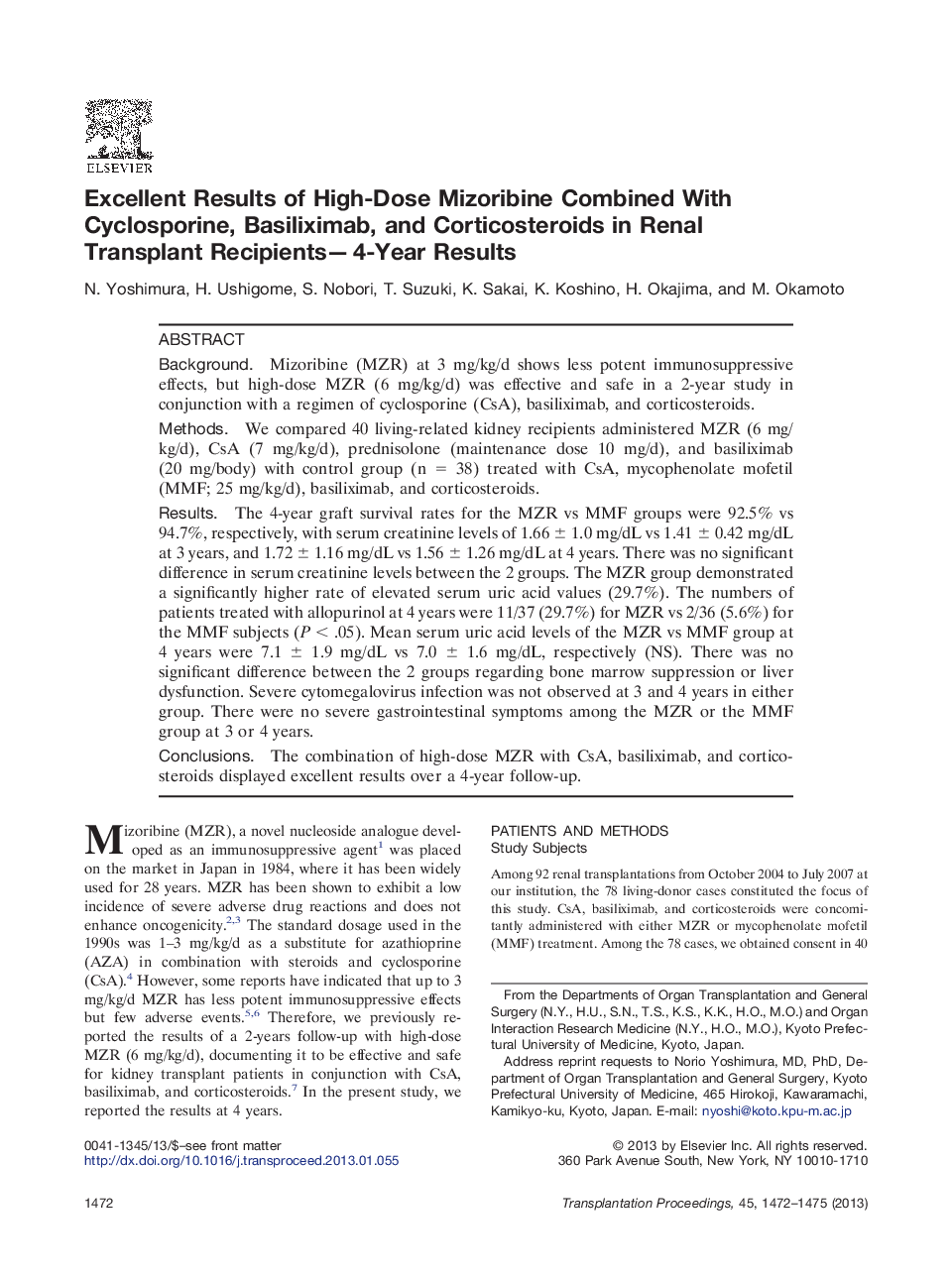| Article ID | Journal | Published Year | Pages | File Type |
|---|---|---|---|---|
| 4257300 | Transplantation Proceedings | 2013 | 4 Pages |
BackgroundMizoribine (MZR) at 3 mg/kg/d shows less potent immunosuppressive effects, but high-dose MZR (6 mg/kg/d) was effective and safe in a 2-year study in conjunction with a regimen of cyclosporine (CsA), basiliximab, and corticosteroids.MethodsWe compared 40 living-related kidney recipients administered MZR (6 mg/kg/d), CsA (7 mg/kg/d), prednisolone (maintenance dose 10 mg/d), and basiliximab (20 mg/body) with control group (n = 38) treated with CsA, mycophenolate mofetil (MMF; 25 mg/kg/d), basiliximab, and corticosteroids.ResultsThe 4-year graft survival rates for the MZR vs MMF groups were 92.5% vs 94.7%, respectively, with serum creatinine levels of 1.66 ± 1.0 mg/dL vs 1.41 ± 0.42 mg/dL at 3 years, and 1.72 ± 1.16 mg/dL vs 1.56 ± 1.26 mg/dL at 4 years. There was no significant difference in serum creatinine levels between the 2 groups. The MZR group demonstrated a significantly higher rate of elevated serum uric acid values (29.7%). The numbers of patients treated with allopurinol at 4 years were 11/37 (29.7%) for MZR vs 2/36 (5.6%) for the MMF subjects (P < .05). Mean serum uric acid levels of the MZR vs MMF group at 4 years were 7.1 ± 1.9 mg/dL vs 7.0 ± 1.6 mg/dL, respectively (NS). There was no significant difference between the 2 groups regarding bone marrow suppression or liver dysfunction. Severe cytomegalovirus infection was not observed at 3 and 4 years in either group. There were no severe gastrointestinal symptoms among the MZR or the MMF group at 3 or 4 years.ConclusionsThe combination of high-dose MZR with CsA, basiliximab, and corticosteroids displayed excellent results over a 4-year follow-up.
